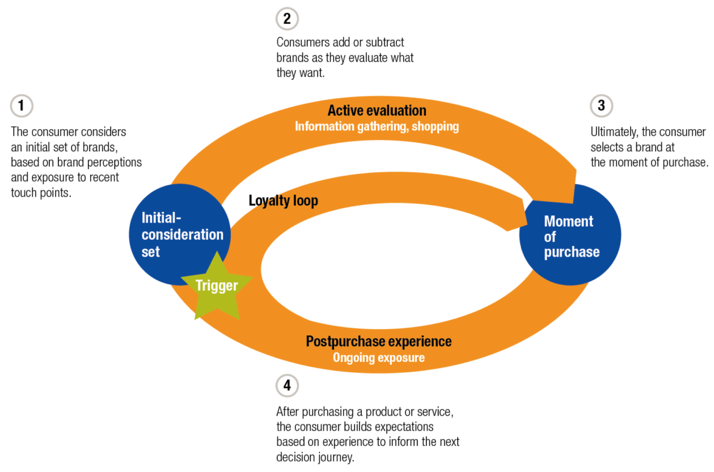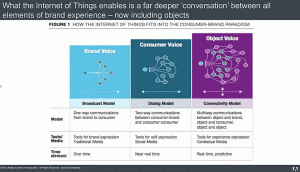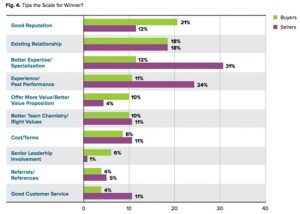— June 4, 2018
Marketing today is like drinking from a firehose. The rate of change in the industry is mind-numbing while the skill set continuum required expands just as quickly. Technology’s exponential growth has given rise to almost 7,000 total marketing technology solutions by 2018, as well as the increasing need to manage digital, data, and analytics. Execution-focused activities like developing new tactics and strategies go hand-in-hand with monitoring trends to address fluctuating consumer behavior. With all these changes to keep in mind, marketers face a continuously changing environment that forces them to acquire new skills and core competencies on a seemingly daily basis.
As marketers contend with copious amounts of industry information, the current transformational nature of the marketplace is having a negative impact on the perceived effectiveness of the Chief Marketing Officer (CMO). For example, CMOs are often the first to go if growth targets are not met and nearly one-third of CEOs considered firing their CMO in 2017. As such, the average tenure of CMOs in the US is only four years and still declining, the shortest of any C-Suite executive.
To exacerbate the situation further, according to Forrester’s 2018 CMO predictions, Chief Growth Officers (CGOs) will replace CMOs as the C-level executive of choice as companies seek executives who are capable of achieving growth in this new environment. Brand behemoth Coca-Cola made the switch to a CGO in 2017, a position that oversees not only global marketing but also leads corporate strategy as well as their customer and commercial leadership teams. Coca-Cola is not alone in modifying its organizational chart. Since 2014, Kellogg’s, Mondelez, Tyson, Constellation Brands, ConAgra, Coty, and Hershey have all installed CGOs, not to mention Colgate-Palmolive, who has had a CGO since 2011.
Why it’s a no-go for the CMO
Due to a highly competitive, digitally-driven marketplace, growth is no longer an obvious path. Fortune 500 firms’ topline revenues fell from 2014 to 2016 while the top 700 multinational companies’ profits fell 25% from 2012 to 2016. Large corporations no longer enjoy the competitive advantage they once held as they face increasing competition from both small and large firms. Technology has given rise to reduced product development cycles, as competitors quickly replicate offerings and disrupt channels. At the same time, newly empowered customers have increasing expectations and often demand better brand experiences.
“What we are experiencing now is a state of perpetual permutation” – Bob Inger, Disney, CEO
Traditional marketing methods and outdated approaches no longer produce the required results that allow companies to remain successful. As many CEOs have already understood, CMOs are accountable for their company’s growth strategy. And if there’s not as much growth as there should be (or the company thinks there should be), the CMO takes the blame.

How to create disruptive growth
Whether CMOs view these additional growth responsibilities as an opportunity or threat, their contributory value lies in their ability to develop new methodologies that will address the shift in market demand to attain growth. According to Kantar Consulting, growth is achieved through scale, value, and influence.
Niches are the new scale
“The 20th-century mass production world was about dozens of markets of millions of people. The 21st century is all about millions of markets of dozens of people.” – Joe Kraus
As consumers seek personalization and refuse to be party to a monolithic group, companies no longer have the option of scaling their businesses based on mass markets. Instead, firms will need to grow through small niches and fragmentation. While some may view this shift as a barrier to growth, opportunities will expand as companies utilize digital technology, analytics, and advanced databases to aggregate new niches that can scale into larger brands.
Value creation through experience
Nine out of ten consumers worldwide place a higher priority on experiences—defined within the parameters of convenience, control, time-efficiency, stress and health levels, and purpose—than on material possessions, according to Global MONITOR. Value is created when a company can produce a captivating customer experience through effortless brand immersion at every customer touch point. Technology like augmented reality (AR), virtual reality (VR), live events on social platforms, and mobile entertainment can help facilitate immersive experiences. A company should view its customers’ brand interactions as equally important as the actual product or service offered.
Influence the consumer decision journey
As shown in the classic consumer journey model, large brands, due to their marketing power, were able to stay in the consideration set through purchase. Due to the increased amount of product choices and digital channels, the new consumer decision journey allows consumers to bypass the traditional sales funnel and gather information through a “pull” method of online reviews and word-of-mouth recommendations. Marketers must learn to influence decision-making at these touch points in addition to traditional “push” methods. In the future, influence will not only be aimed at the consumer, but also directed at technology through predictive analytic algorithms; this is already occurring at Spotify to determine user music selection and Amazon through smart appliances using Dash devices.
Classic consumer decision journey:

New consumer decision journey:
Even if your company decides to use a CGO, the future value of your effectiveness as a CMO will depend on your ability to drive growth through transformational demand generation strategies. Assuming you’re capable of scaling through niche markets, increasing value through experiences, or influencing the customer decision journey, you may be able to avoid being on the endangered C-level list. If you would like to learn more about how to drive transformational growth, download an exclusive preview of my book Marketing, Interrupted.
Business & Finance Articles on Business 2 Community
(93)









